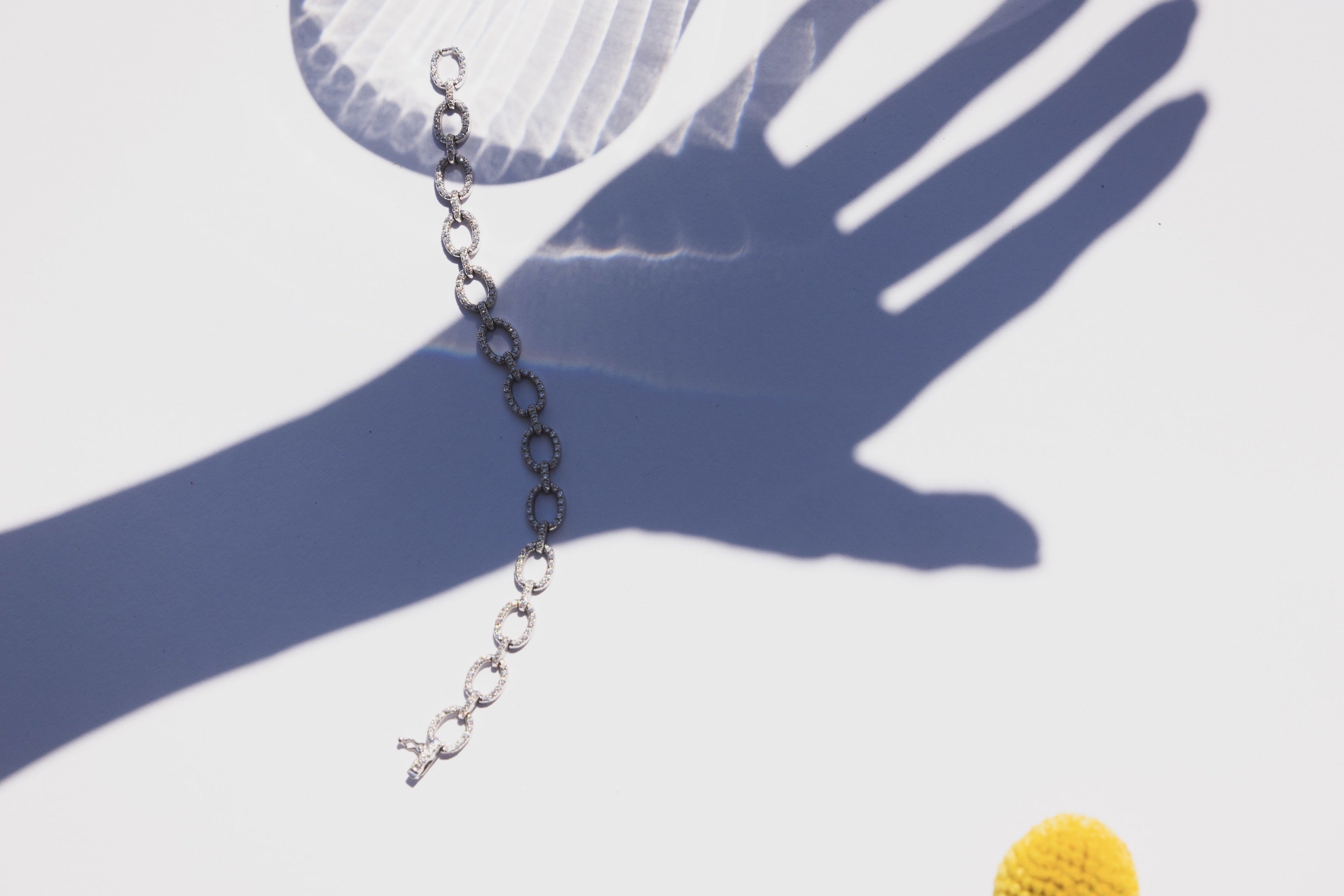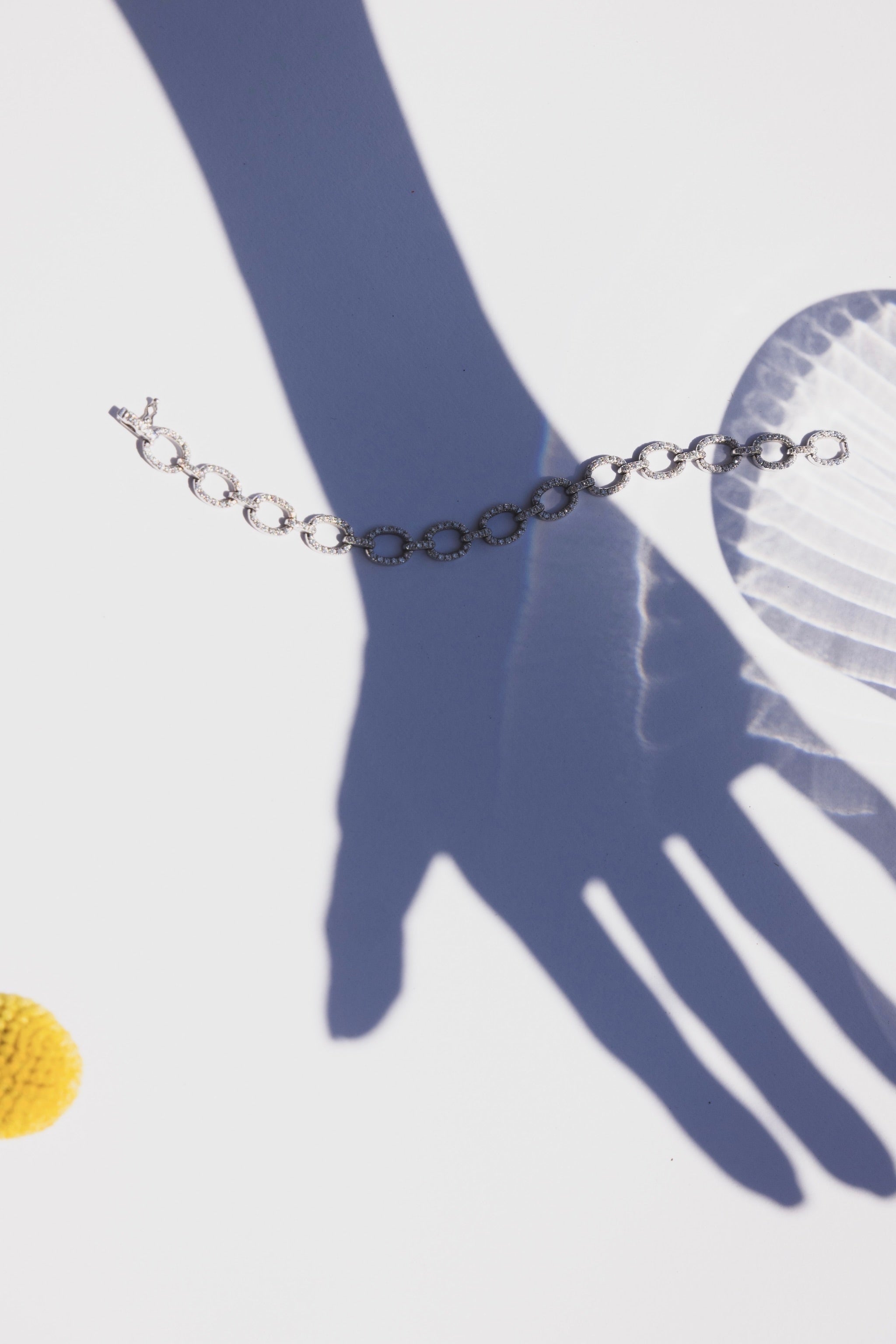Size Guide
RINGS
BRACELETS
NECKLACES
Your ring size
To ensure accurate sizing, we recommend measuring the size of your finger using the String or Paper method:
- Take a length of string or paper and wrap it around the base of your finger for a comfortable fit. It is important to choose a size that allows easy sliding on and off of the finger.
- Mark the point where the ends of the string or paper meet. Using a ruler, measure the length of the string.
- Refer to the chart below and select the measurement that is closest to your measurement.
Keep in mind that the size of your dominant hand may differ slightly from your non-dominant hand, so it's recommended to measure both if possible. Additionally, fingers can vary in size, so it's important to measure the specific finger on which you intend to wear the ring.
| Finger circumference in mm | EU | UK | USA |
| 45 | 45 | G | 3 1/4 |
| 46 | 46 | H | 3 3/4 |
| 47 | 47 | H 1/2 | 4 |
| 48 | 48 | I 1/2 | 4 1/2 |
| 49 | 49 | J 1/2 | 4 3/4 |
| 50 | 50 | K | 5 1/4 |
| 51 | 51 | L | 5 3/4 |
| 52 | 52 | L 1/2 | 6 |
| 53 | 53 | M 1/2 | 6 1/4 |
| 54 | 54 | N 1/2 | 6 3/4 |
| 55 | 55 | O | 7 1/4 |
| 56 | 56 | P | 7 1/2 |
| 57 | 57 | P 1/2 | 8 |
| 58 | 58 | Q 1/2 | 8 1/4 |
| 59 | 59 | R | 8 3/4 |
| 60 | 60 | S | 9 |
Your bracelet size
Measure Your Wrist Size:
- Take a flexible measuring tape or a strip of paper and wrap it around your wrist where you would typically wear a bracelet.
- Make sure the measuring tape or paper is snug but not too tight on your wrist.
- If you're using a strip of paper, mark the point where it overlaps with a pen or pencil.
- Measure the length of the measuring tape or paper in centimeters to determine your wrist size.
Determine Your Bracelet Size:
- Add the desired amount of ease to your wrist size measurement to find your bracelet size. The amount of ease will depend on your personal preference for a loose or snug fit.
- Here are some general guidelines for adding ease:
- For a snug fit, add 1.5 centimeters to your wrist size measurement.
- For a standard fit, add 2 centimeters to your wrist size measurement.
- For a loose fit, add 2.5 centimeters to your wrist size measurement.
- Consider the Bracelet Style:
- Different bracelet styles may require additional length to accommodate the design or clasp.
- If you're choosing a bracelet with a bulky or chunky design, it's advisable to add an extra centimeter or two to ensure a comfortable fit.
Your necklace size
Determine the Necklace Length:
- Start by considering the desired placement of the necklace on your neck. For example, do you want it to rest on your collarbone, or would you prefer a longer necklace that hangs lower.
- Use a string or paper to measure the desired length of the necklace. Hold it up to your neck to get an idea of how the length will look and feel.
Choose the Necklace Length:
- Collar (typically 30-33 cm): This length sits snugly around the middle of the neck.
- Choker (35-41 cm): A choker rests on the base of the neck and is typically a tight-fitting style.
- Princess (45-50 cm): The princess length is the most common and falls just below the collarbone.
- Matinee (56-61 cm): Matinee necklaces hang below the collarbone and are perfect for both casual and formal occasions.
- Opera (71-86 cm): Opera necklaces are longer, reaching the chest or breastbone and are often worn with evening gowns or for dramatic looks.
- Rope (over 91 cm): Rope necklaces are very long and can be doubled or layered for versatile styling.


